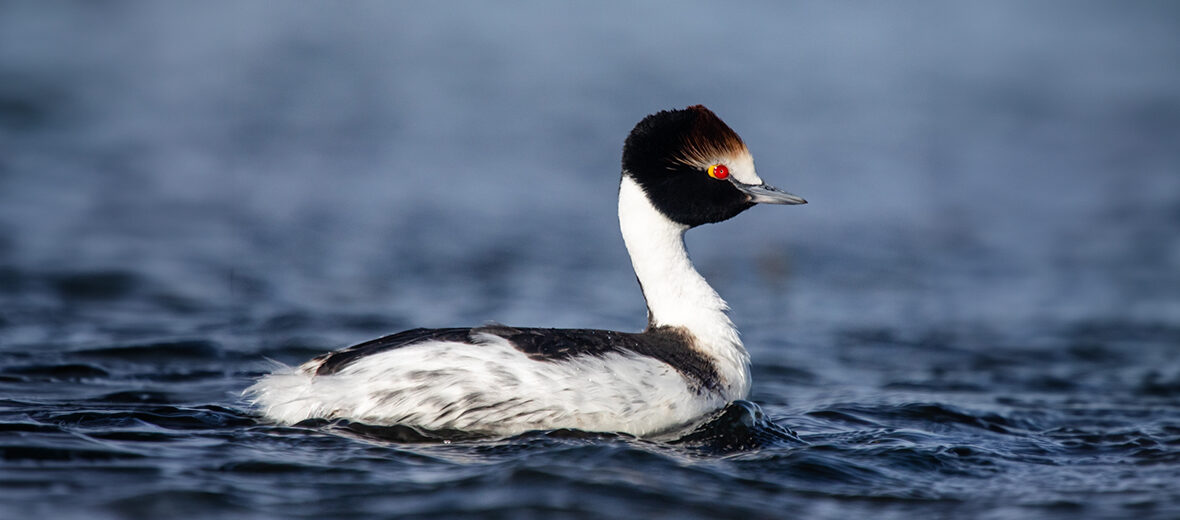
The hooded grebe hails only from the southern region of Argentina. Grebes are diving birds in the order Podicipediformes. Sadly, these water birds face many threats such as habitat loss and destruction at the hands of farming, ranching, mining, and renewable energy; invasive species, that can bring about predation; pollution; volcanic activity; and climate change, that can cause habitat shifting and alterations due to droughts and/or flooding. The IUCN lists these birds as Critically Endangered.
First the Stats…
Scientific name: Podiceps gallardoi
Weight: Up to 21.52 ounces
Length: Up to 13 inches
Wingspan: Up to 15 inches
Lifespan: Up to 12 years
Now on to the Facts!
1.) Their population as of 2019 was just an estimated 800 wild individuals. Their numbers are listed as stable.
2.) They prefer isolated saline and bitter salt lake habitats in the most remote parts of Patagonia.
3.) Snails, amphipods, arthropods, midge pupae, bugs, larvae of water beetles, copepods, and various beetles are all on the menu.
4.) The American mink is their primary predator; along with steamer ducks and kelp gulls.
5.) Excessive grazing by sheep also not only causes soil erosion, but also limits the growth of aquatic vegetation that the grebes rely on.
But wait, there’s more on the hooded grebe!
6.) Nesting colonies of up to 130 pairs gather around October – March.
7.) Nests are built with aquatic vegetation; the same vegetation that is home to the invertebrates they eat.
Did you know…?
When minks initially arrived in 2010 – 2011 on the Buenos Aires plateau, they killed more than half the adults in a breeding colony of approximately 24 nests!
8.) The average number of young reared per adult is 0.2 annually. However, there is a low adult mortality rate.
9.) Females lay up to 2 eggs each breeding season. But only 1 egg hatches in up to 21 days.
10.) The eggs hatch asynchronously, and the 2nd egg is typically abandoned.
But wait, there’s still more on the hooded grebe!
11.) There is currently planned research into the grebe’s migration patterns which are supported by the Zoological Society of London’s EDGE of Existence program and Cornell University.
12.) The use of Patagonia National Park as a protected area where various species management activities occur has also been proposed to aid in preserving these aquatic birds.
Now a Short Hooded Grebe Video!
Be sure to share & comment below! Also, check out the Critter Science YouTube channel. Videos added regularly!
Want to suggest a critter for me to write about? Let me know here.
Some source material acquired from: Wikipedia & IUCN
Photo credit: iNaturalist




